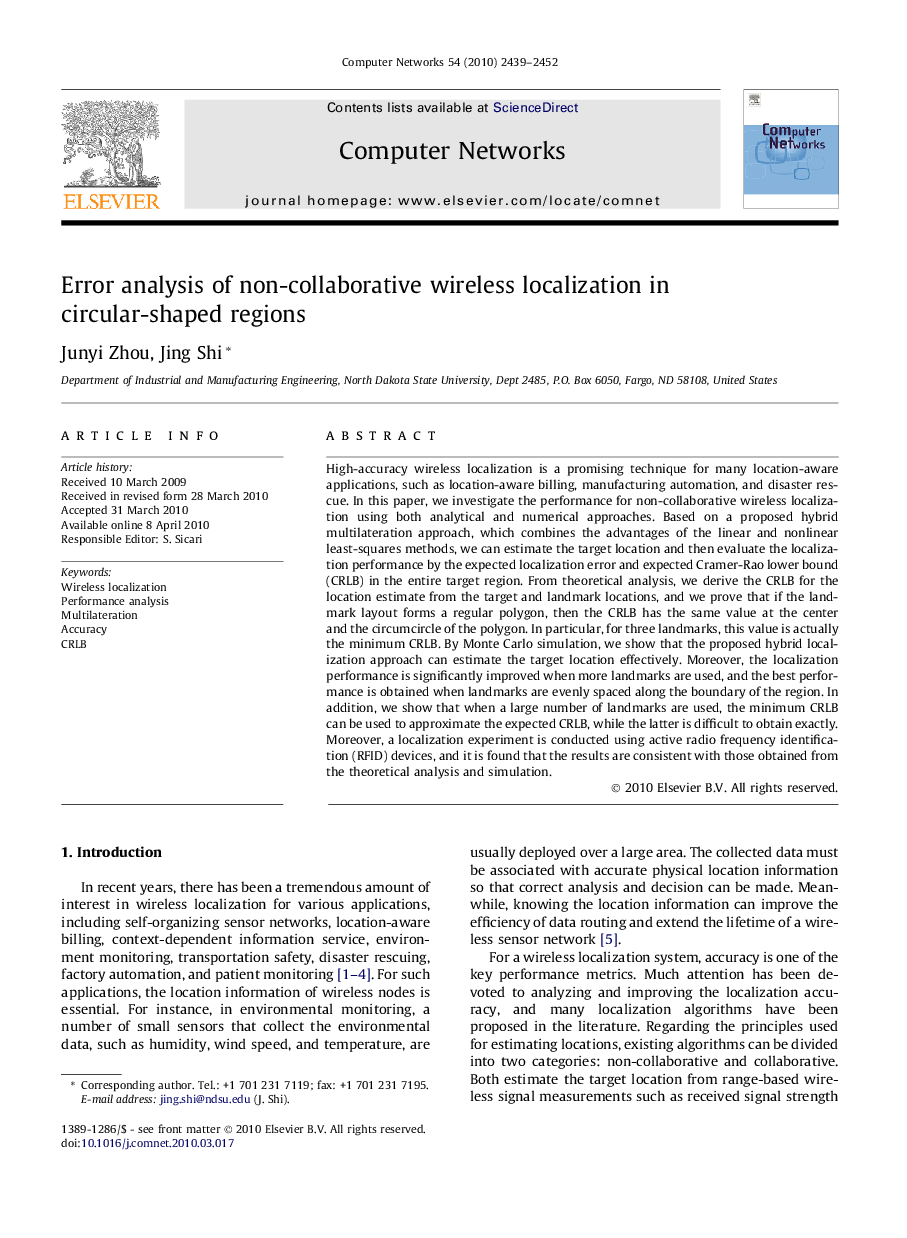| Article ID | Journal | Published Year | Pages | File Type |
|---|---|---|---|---|
| 451292 | Computer Networks | 2010 | 14 Pages |
High-accuracy wireless localization is a promising technique for many location-aware applications, such as location-aware billing, manufacturing automation, and disaster rescue. In this paper, we investigate the performance for non-collaborative wireless localization using both analytical and numerical approaches. Based on a proposed hybrid multilateration approach, which combines the advantages of the linear and nonlinear least-squares methods, we can estimate the target location and then evaluate the localization performance by the expected localization error and expected Cramer-Rao lower bound (CRLB) in the entire target region. From theoretical analysis, we derive the CRLB for the location estimate from the target and landmark locations, and we prove that if the landmark layout forms a regular polygon, then the CRLB has the same value at the center and the circumcircle of the polygon. In particular, for three landmarks, this value is actually the minimum CRLB. By Monte Carlo simulation, we show that the proposed hybrid localization approach can estimate the target location effectively. Moreover, the localization performance is significantly improved when more landmarks are used, and the best performance is obtained when landmarks are evenly spaced along the boundary of the region. In addition, we show that when a large number of landmarks are used, the minimum CRLB can be used to approximate the expected CRLB, while the latter is difficult to obtain exactly. Moreover, a localization experiment is conducted using active radio frequency identification (RFID) devices, and it is found that the results are consistent with those obtained from the theoretical analysis and simulation.
